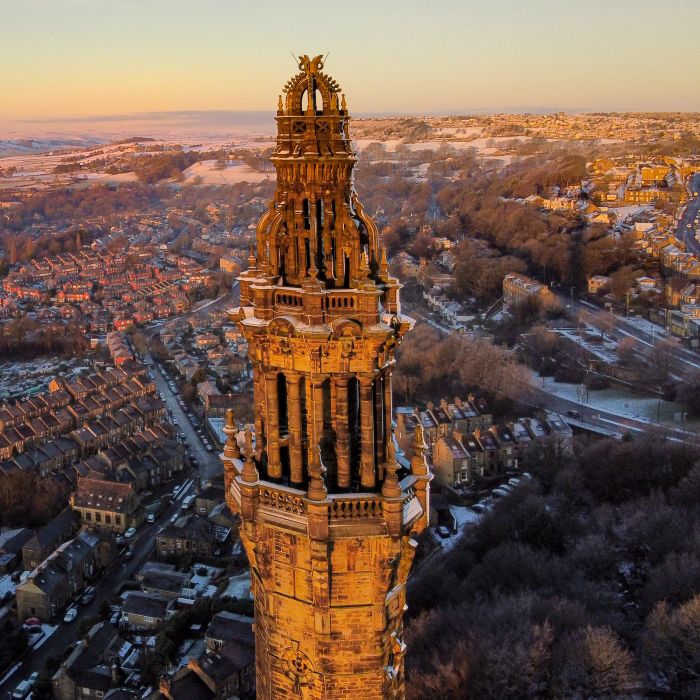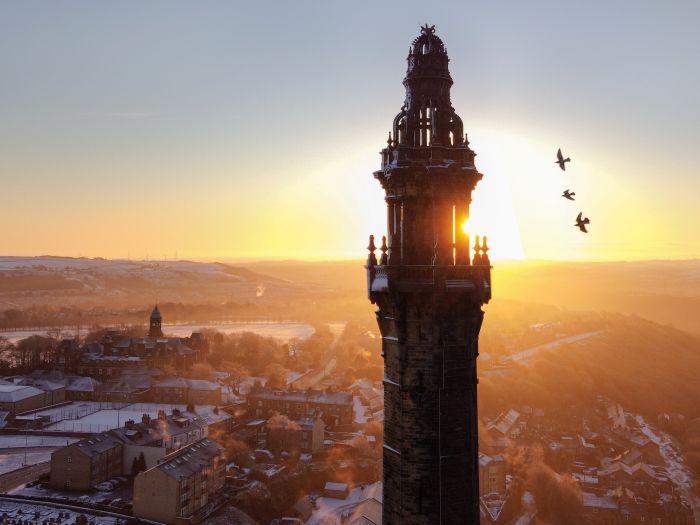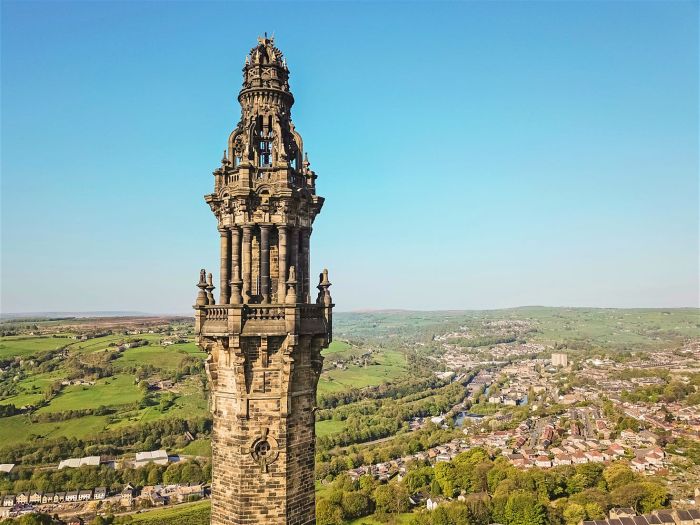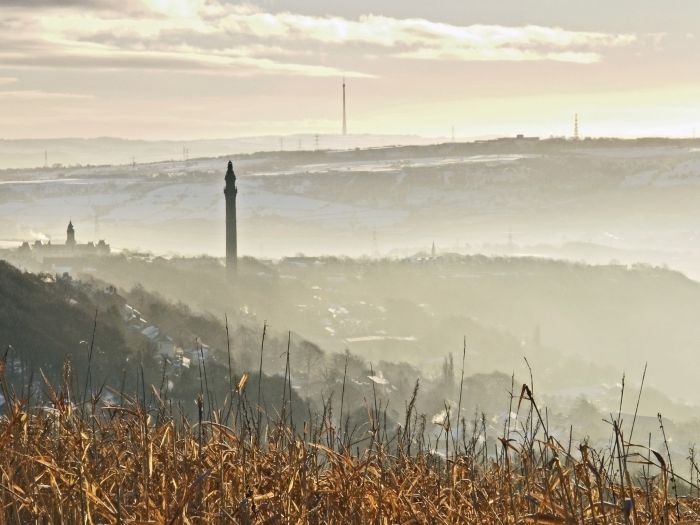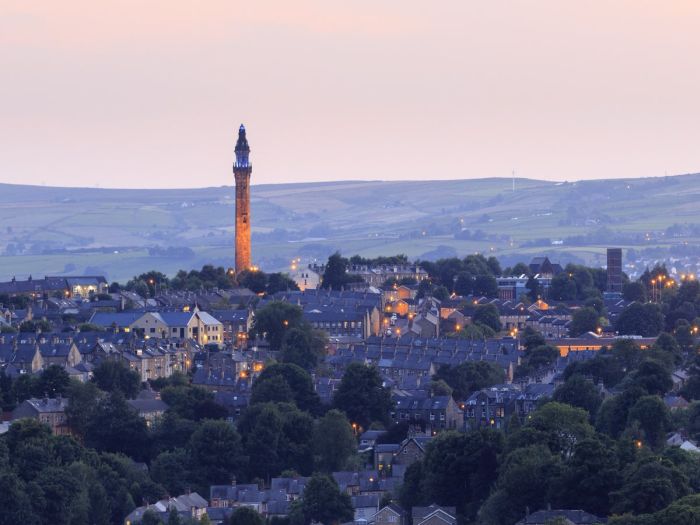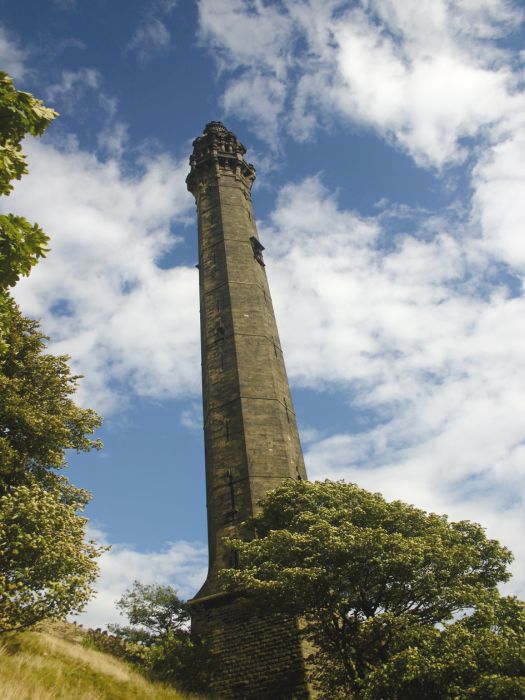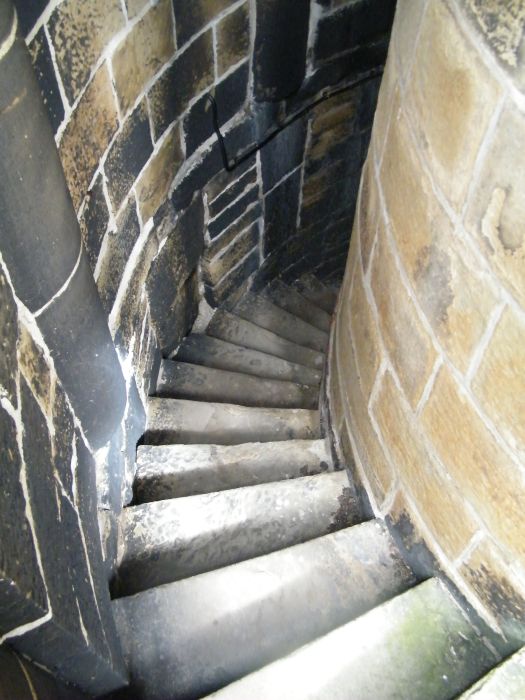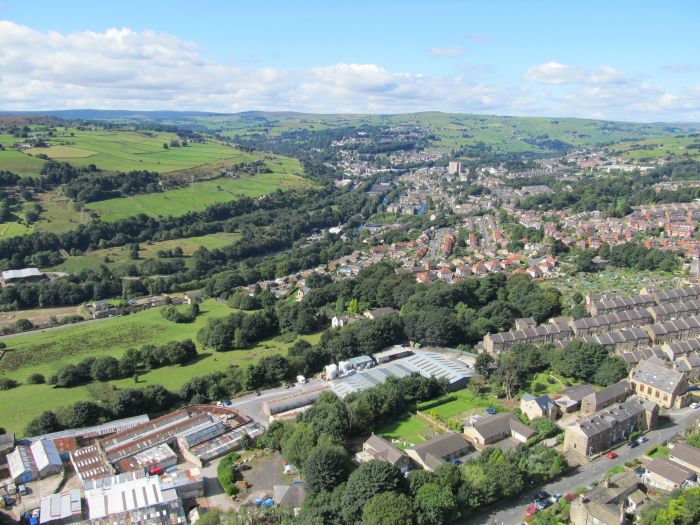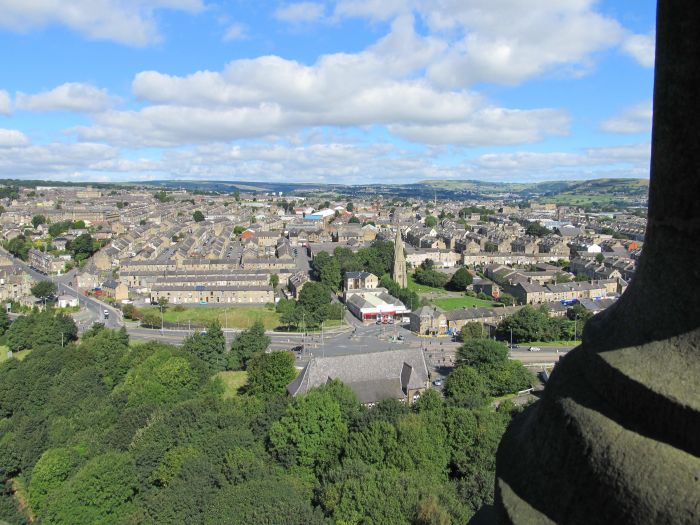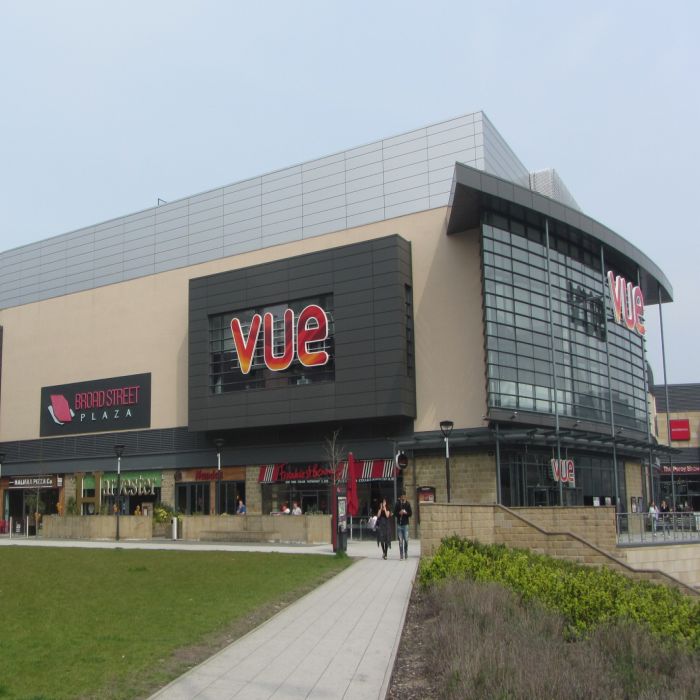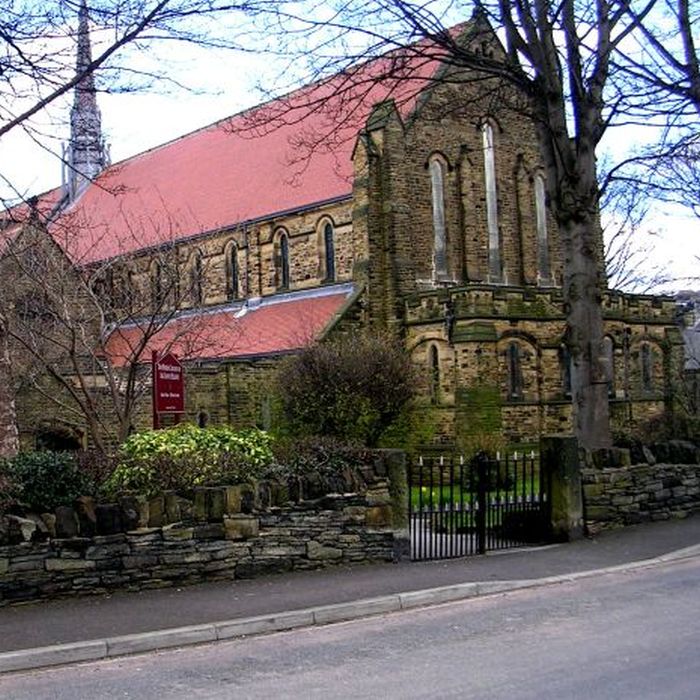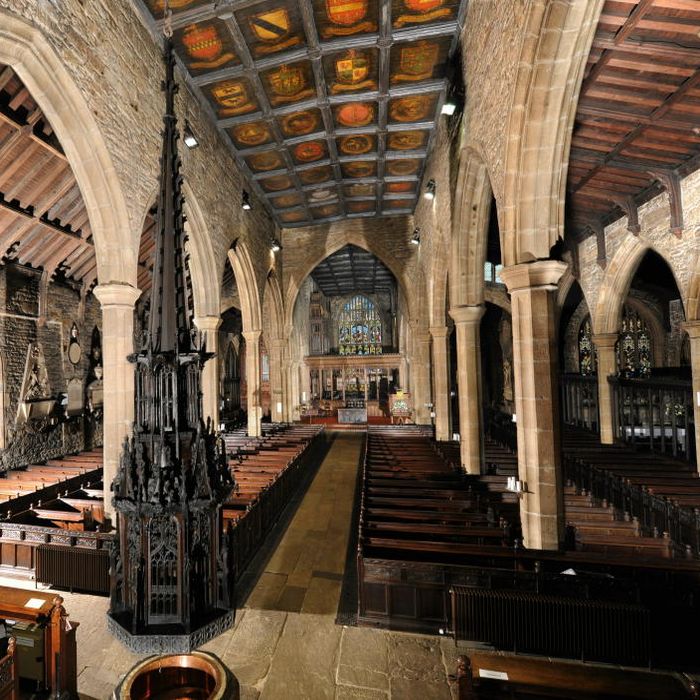Halifax |
Wainhouse Tower
Contact details
- 9 Wakefield Gate, Halifax, West Yorkshire, HX3 0HB
- https://www.youtube.com/watch?v=vkGsWDBLxFQ&app=desktop
Information on Wainhouse Tower
Attraction type:
Interests
- Culture & Heritage
- Family
- Historic Sites & Trails
The fabulous and ornate 77 metres (253 feet) high Wainhouse Tower was originally commissioned as a chimney for the local dye works by John Edward Wainhouse in the late 19th century. The structure was never actually used as a working chimney and as such, it is regarded by many as one of Britain’s finest follies. For those brave enough to tackle the 369 steps to the viewing gallery at the top, the stunning views make it well worth the climb!
Can I Go Up Wainhouse Tower?
It s planned to open Wainhouse Tower for ascents on the 1st Wednesday and 3rd Saturday of each month, plus on Bank Holidays. Each date will be confirmed as soon as possible.
Wainhouse Tower will next be open on Bank Holiday Monday 6th May with ascents taking place at 10am, 11am, 1pm, 2pm and 3pm. From Noon on Thursday 2nd May. EDIT (3rd May 10:11am) : All five ascents on 6th May are now fully sold out. We are planning to open the Tower on another two dates this month. We’ll announce the details as soon as they are confirmed. You will be able to book tickets on Eventbrite here
We are also planning to open the Tower on Saturday 18th May and Bank Holiday Monday 27th May – once we have confirmed these dates we will update this page, announce the dates through the VisitCalderdale social media channels on Facebook and X (formerly Twitter) and you will then be able to book tickets via the Eventbrite link above.
Please note that the tower is NOT open on daily basis, despite out of date information (which we are trying to have amended) on third party websites such as Google and Tripadvisor.
For any enquiries about Wainhouse Tower, please email: wainhouse.tower@calderdale.gov.uk.
Visiting Wainhouse Tower
The address for Wainhouse Tower is 9 Wakefield Gate, King Cross, Halifax, HX3 0HB.
If you’re travelling to Wainhouse Tower by car, please park considerately so you leave enough space for any emergency vehicles to pass and you do not block any driveways or entrances to other roads. There is no parking in the immediate vicinity of the Tower. Visitors may park on Skircoat Moor Road (A646) and approach the Tower on foot by travelling down Wakefield Gate and taking the footpath on your right from Wakefield Gate to the base of the Tower.
A Brief History of Wainhouse Tower
Born in 1817 John Edward Wainhouse inherited his Uncle’s Dyeworks on Washer Lane, Halifax in 1854. The Dyeworks were typical of the day, causing considerable pollution because of smoke emissions.
At the time Halifax was badly affected by smog. For weeks on end the smoke-laden atmosphere blanketed the town, reducing sunlight and contaminating the landscape with soot and sulphur trioxide. Halifax Corporation was urgently trying to implement measures to control the amount of smoke in the atmosphere. Such pollution was a national problem which led to the Government introducing a Smoke Abatement Act in 1853.
Sir Henry Edwards, A wealthy neighbour of Wainhouse, made complaints about the smoke nuisance caused by the Dyeworks, leading to a feud between the two men. John Edward Wainhouse developed the idea of building a chimney 350 metres up the hillside from the Dyeworks, connected to it by an underground flue. Wainhouse had a good appreciation of architecture and determined that the chimney should be an object of beauty.
The original architect to work on the project was Mr Isaac Booth, who was asked by John Edward Wainhouse to design and build the mill chimney. The design incorporated an internal staircase that led to four balcony features. However, Isaac Booth was also Sir Henry Edward’s architect.
Sir Henry, an extrovert and boastful man, claimed that his private estate at Pye Nest could not be viewed from any house on the hills. John Edward Wainhouse said he would rectify this with his balconied observatory at the top of his chimney. Needless to say, this exacerbated the deepening feud between Wainhouse and Sir Henry and led to the Tower’s local nickname ‘The Tower of Spite’.
Work commenced in 1871, using locally quarried stone. In 1873, as a result of the feuding; the architect Isaac Booth decided he could no longer work for either man. This led to the appointment of Richard Swarbrick Dugdale, who redesigned the upper section of the building, incorporating a corbelled and balustraded balcony, surmounted by a lantern dome and finial.
The building was completed on the 9th September 1875. It is estimated that over 9,000 tonnes of materials were used. The total cost is thought to be in the region of £15,000. However, by the time the building was completed, it was clear that it would never be used as a chimney.
John Edward Wainhouse had sold the Washer Lane Dyeworks in 1874 to his works manager Mr Henry Mossman. The sale did not include the Tower. It is thought that Mossman saw the then uncompleted building to be a liability. This point of view is difficult to understand given the fact that Mossman was then prosecuted under the Smoke Abatement Act. Mossman proved that considerable efforts were made to abate the smoke nuisance by pulling down six existing smaller chimneys …and erecting a large chimney in their place!
John Edward Wainhouse died on 26th July 1883 at the age of 66. He is buried in the family grave at Holy Trinity Churchyard, Halifax. The gravestone is located against the boundary wall on the south side of the Church.
The Tower and three acres of surrounding land were sold by auction in 1887. The Tower changed hands several times until coming under the ownership of the Halifax Corporation in 1919. During the Second World War the Tower was used by the military authorities as an observation post.
As a result of the reorganisation of Local Government in 1974, ownership of Wainhouse Tower passed to Calderdale Council, where it has remained ever since.
Restoration of Wainhouse Tower
From the summer of 2008 Wainhouse Tower was closed to the public for nearly two years, to allow for extensive re-pointing and repair works to halt the deterioration of the building’s fabric. Powered hoists, a bosun’s chair and complex scaffolding around the top section of the Tower provided access for the repair work, which included:
- Full re-pointing of the whole of the tower using a lime-based mortar to protect the stonework and allow it to breathe.
- Dismantling and rebuilding of the top corona to allow removal of corroding ironwork. New stainless steel dowels and staples were used in the rebuilding process to prevent future deterioration.
- Replacement lead roof/floor at corona level.
- Improved access to the corona to service the lightning conductor and new lights.
- New carved stone sections at various locations throughout the tower. The stone for these was sourced and carved by a local stone mason.
- Stitching and dowelling of sound but cracked stone to prevent further deterioration.
- A new concrete cap and associated support structure to the flue in the middle of the tower.
- New stainless steel straps to replace corroded iron staples within the upper section of the staircase.
- New LEDs (light-emitting diodes) positioned at the corona level. This level had never been lit before and it was decided that lamps in this position would allow the public to see this section in more detail at night. Blue was chosen as complementary to the orange and green lamps already in position.
